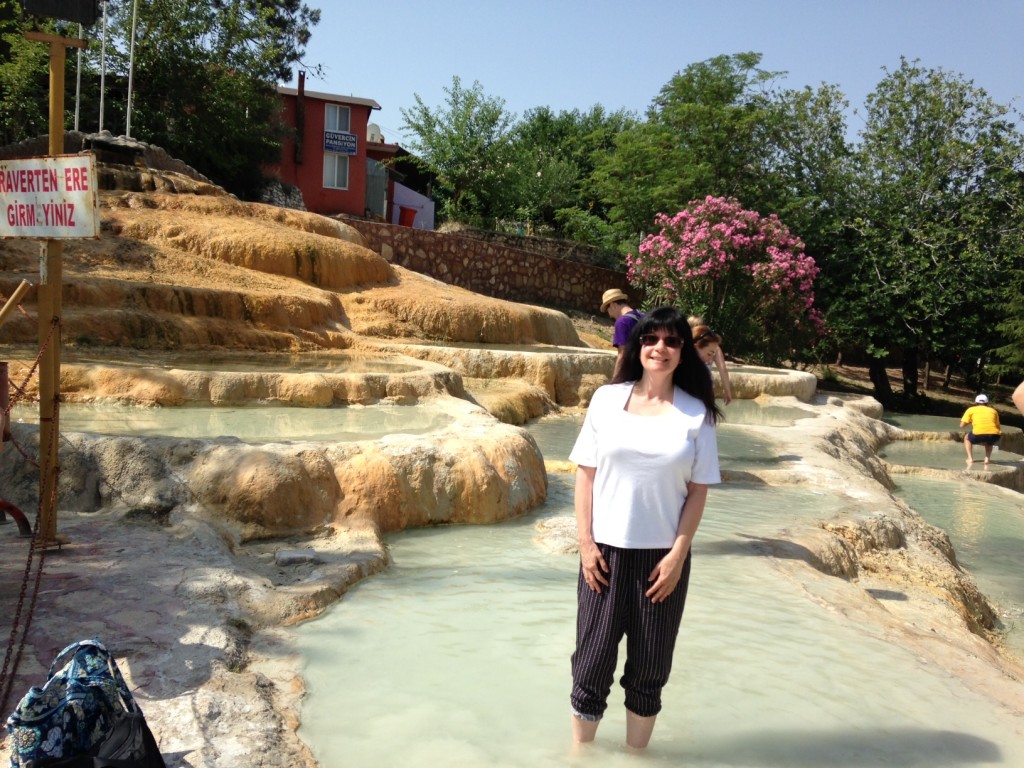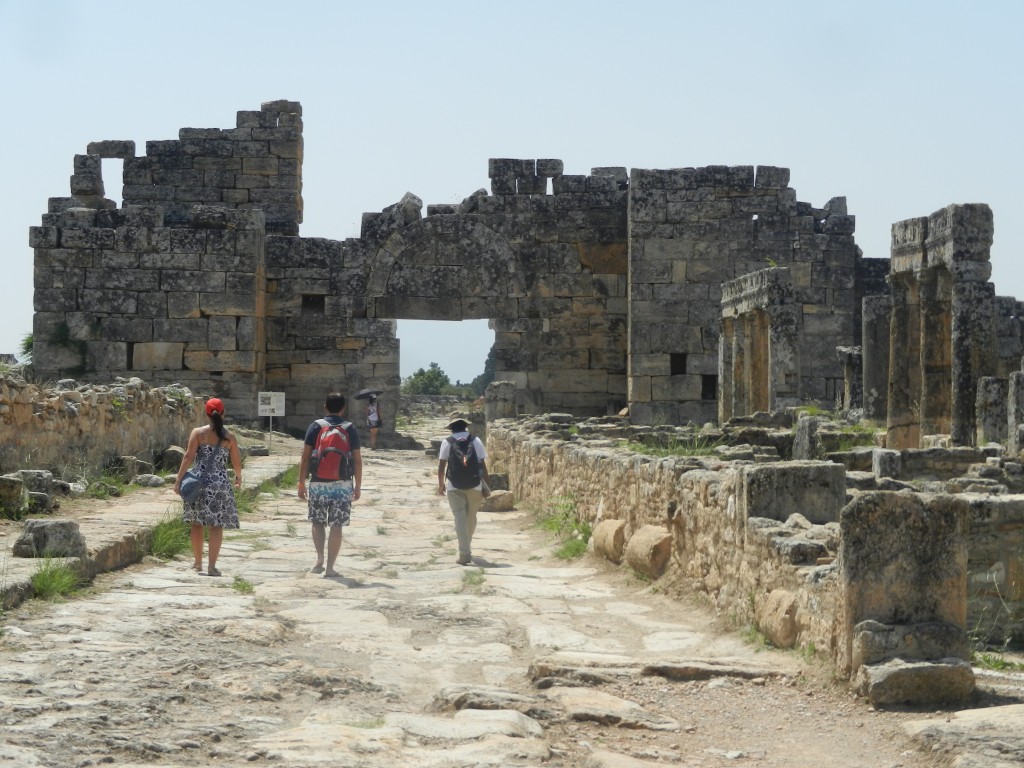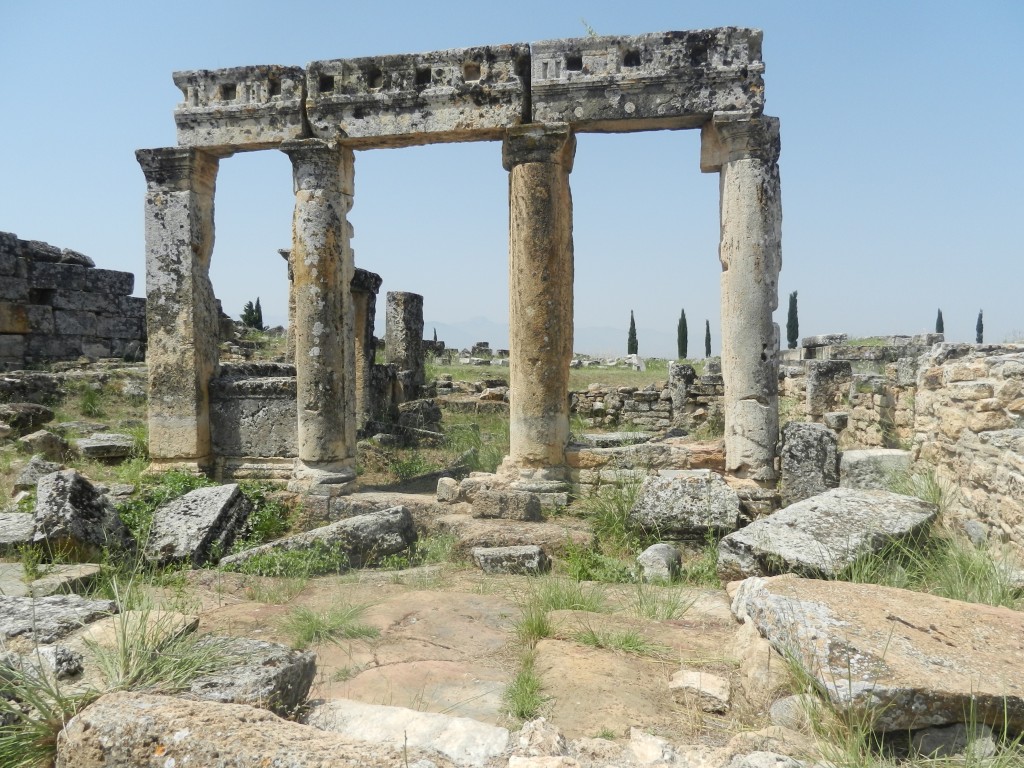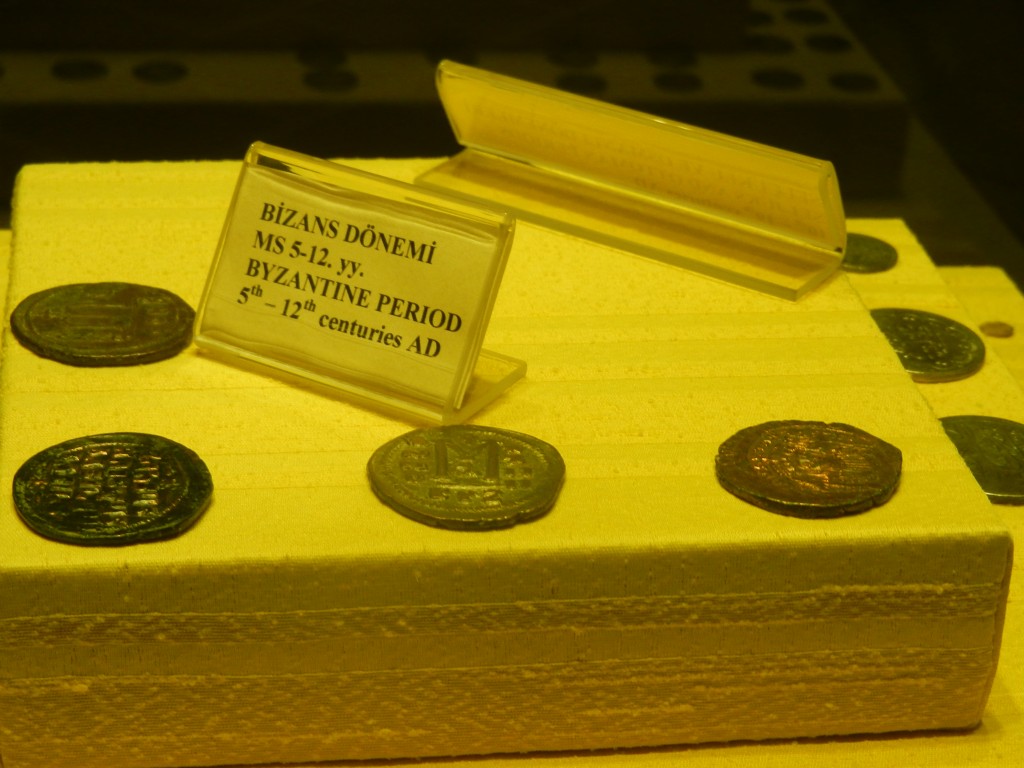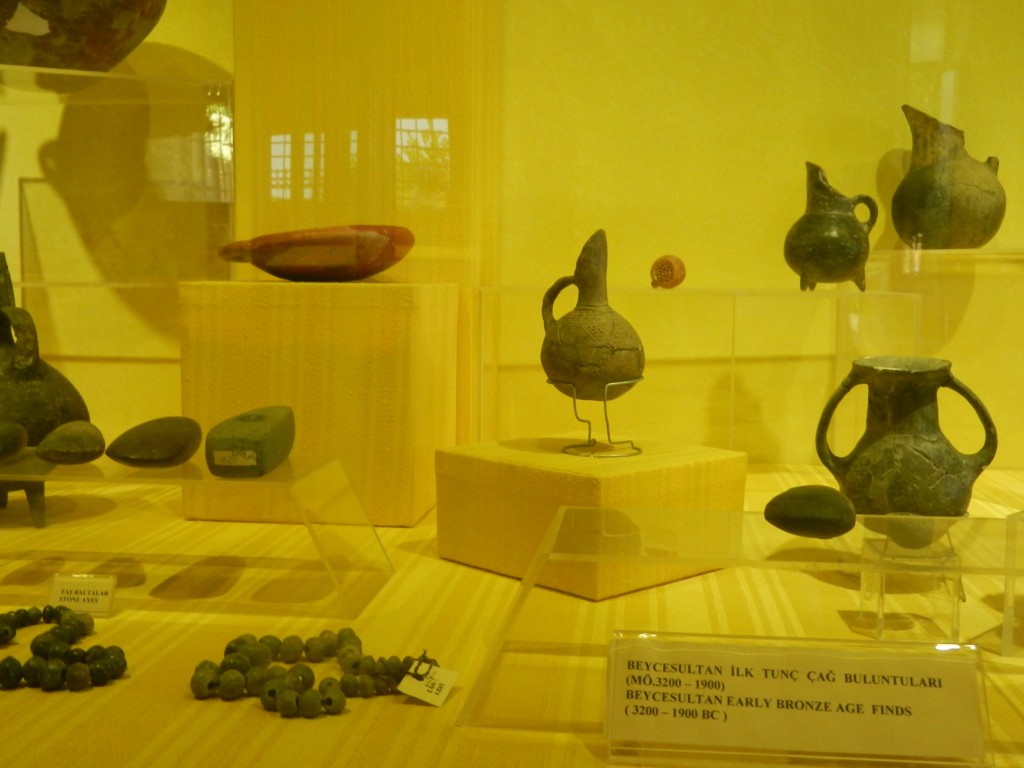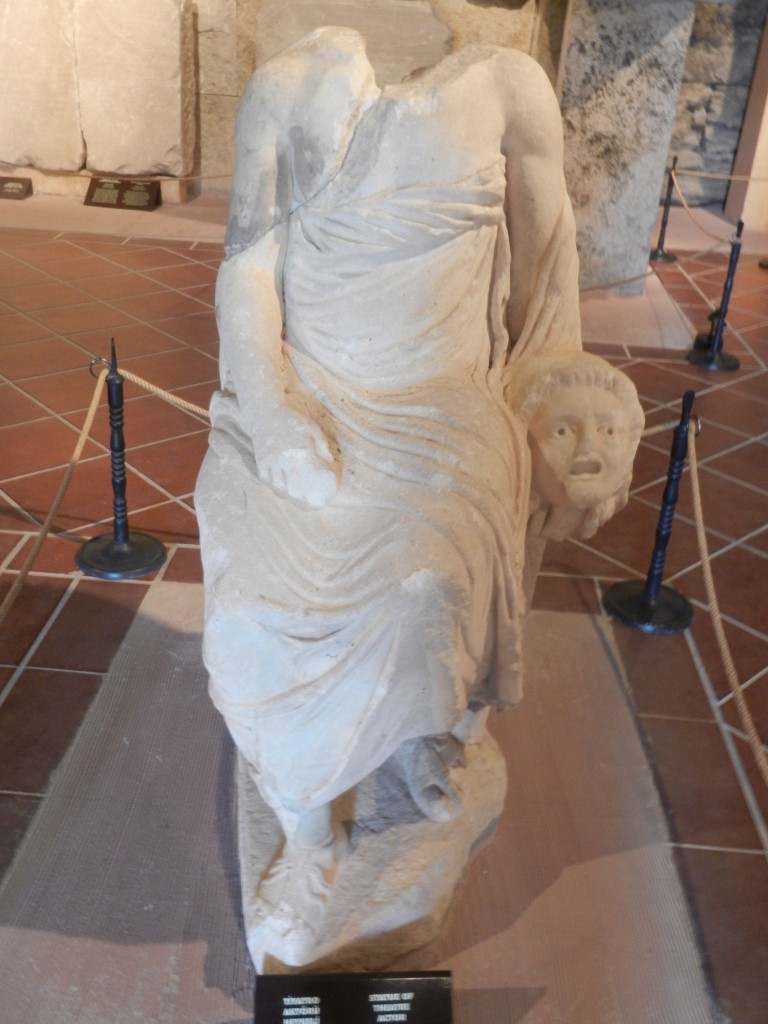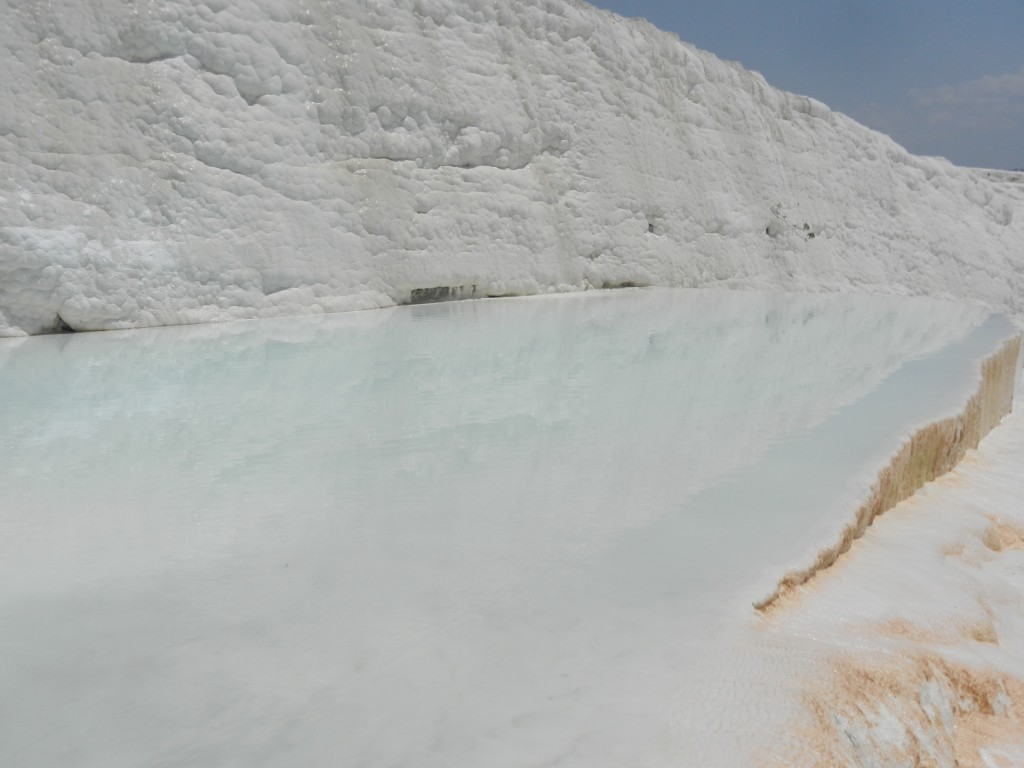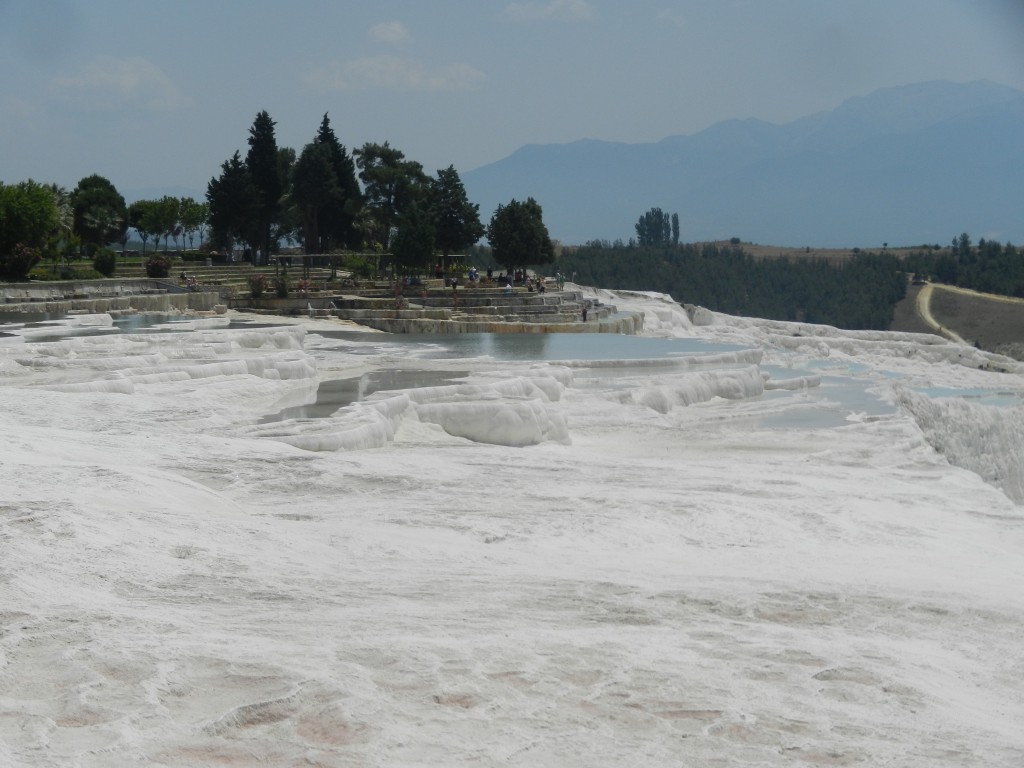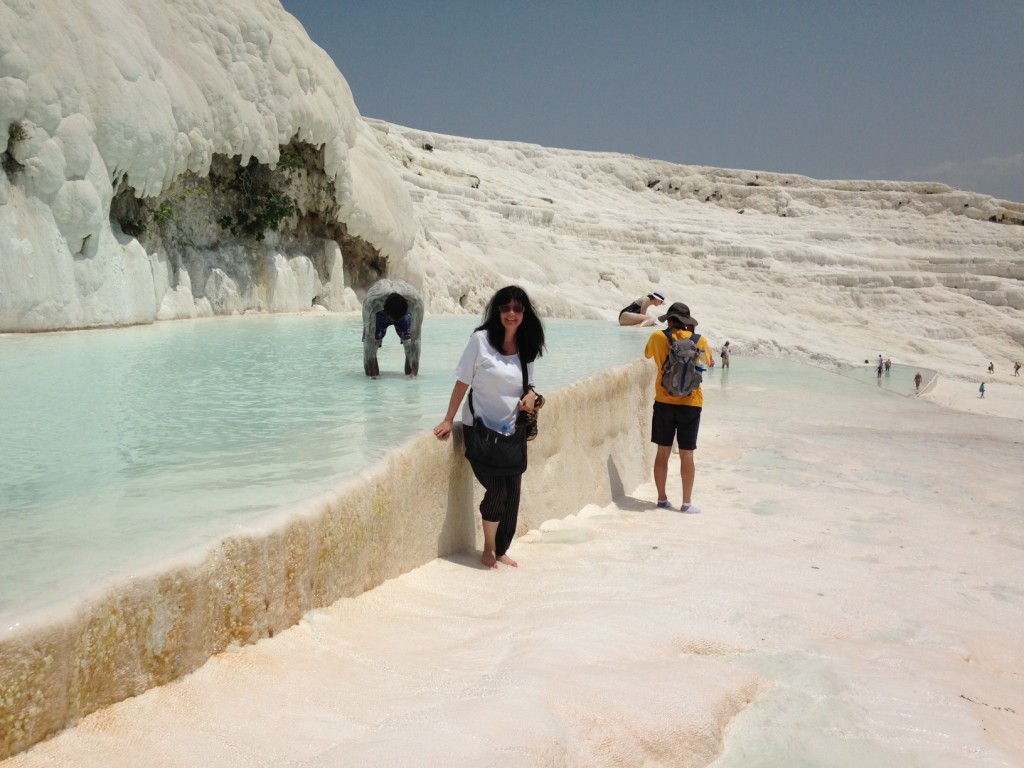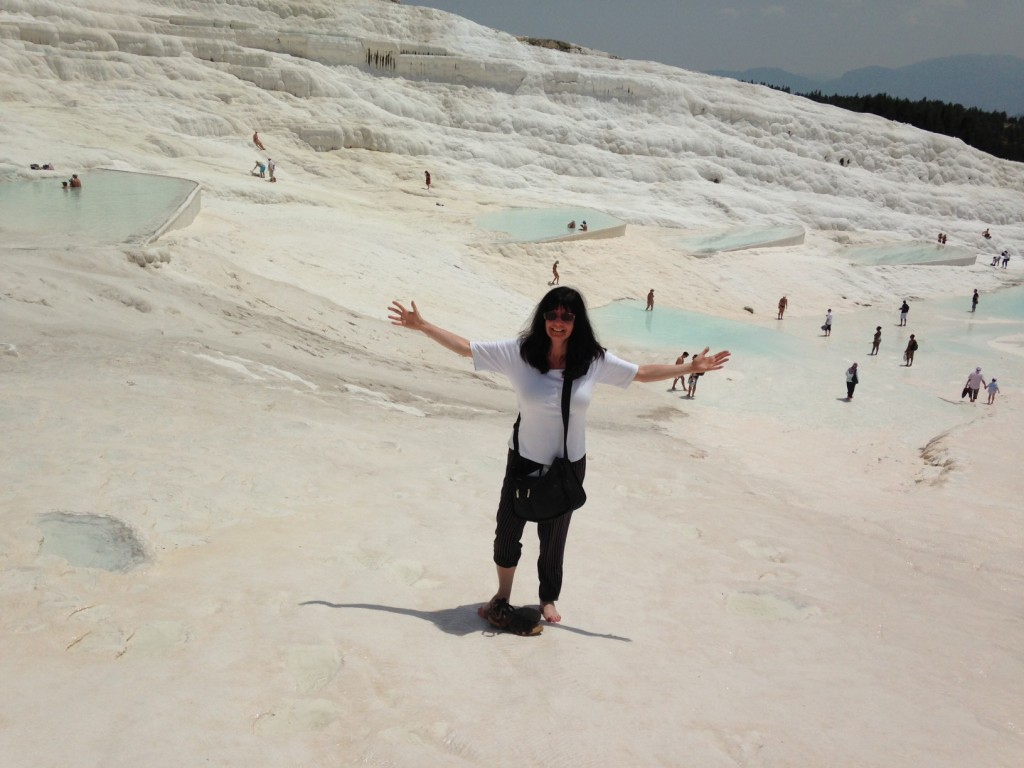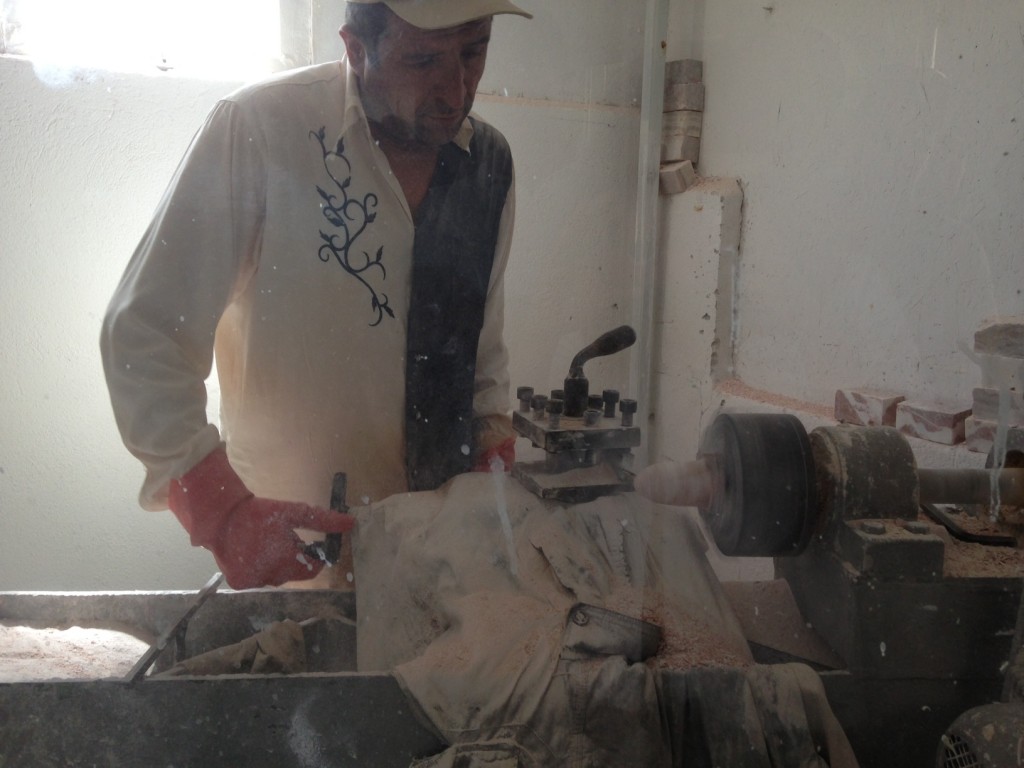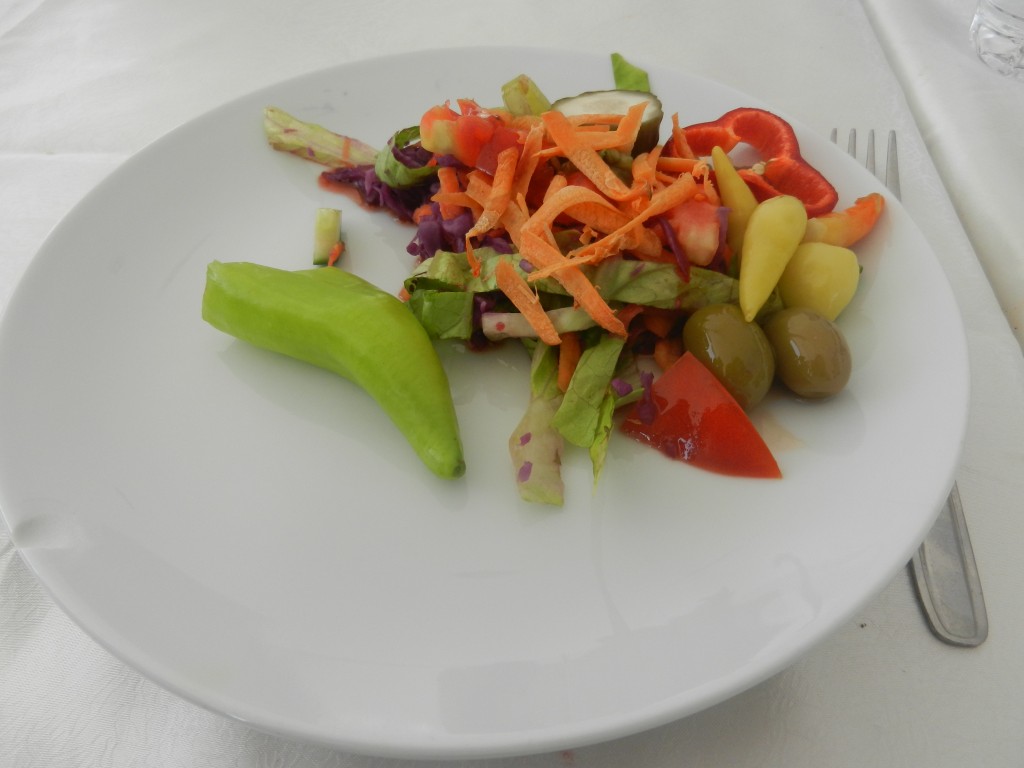When my overnight bus arrived in Pamukkale, Turkey; a representative from the tour company met me at the bus station. The tour company had arranged for its guests to stay at a temporary hotel room for a couple of hours to freshen up before the start of our local tour. The hotel not only provided sleeping quarters and a shower, but breakfast was included also.
My vegan breakfast option was some bread with jam, a slice of watermelon, and some olives, tomato slices, and cucumber.
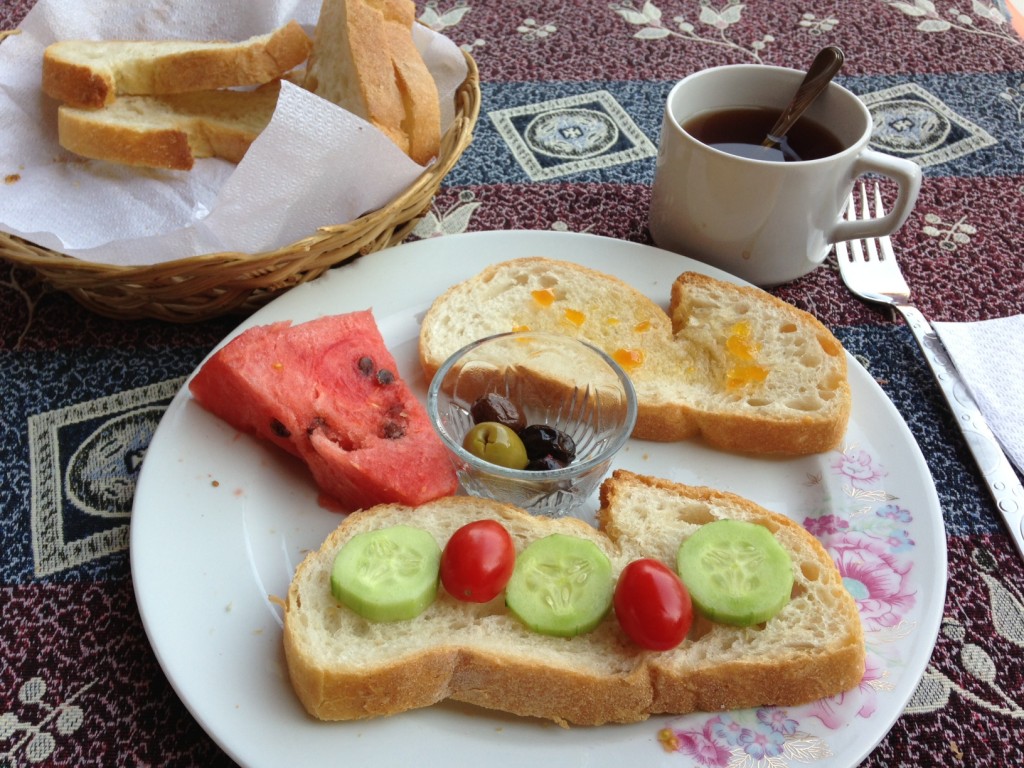
A quick nap was just what “the doctor ordered” to unwind after a lengthy overnight bus ride. Eventually the tour guide arrived and onward we went to our tour destination! The first stop was a spot where there were a few thermal pools. It was a sneak preview of what we would encounter later in the morning. The water rippled between the terraced stone pools. The waters were warm and soothing to the skin.
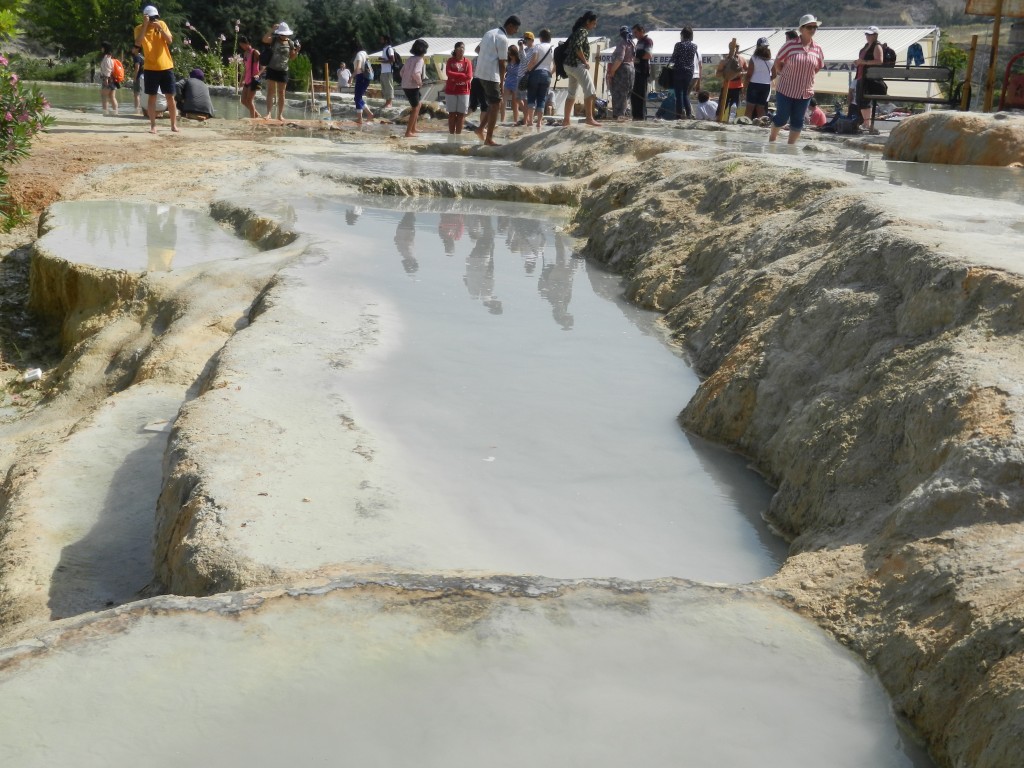
Our time at the thermal pools had come to an end and we were next on our way to the ancient village ruins of Hieropoulos. The old city was located on hot springs in southwestern Anatolia. It was founded as a spa town in the 2nd century BC, used by doctors for patient medical treatments. A temple was built there during the 3rd century BC. In 133 BC, it became part of the Roman Empire.
Prior to the Hieropoulos agora entrance, one finds the Necropoulos. These ancient tombs are among the best preserved in Turkey.
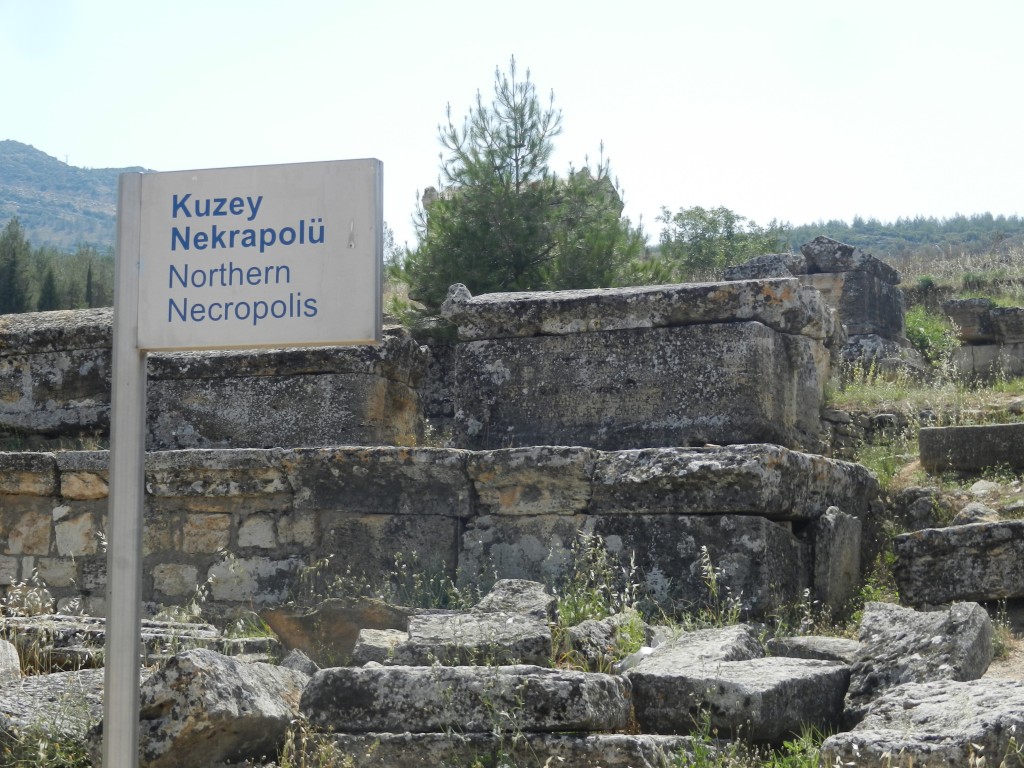
The entrance gate to the main street of Hieropoulos is still well-preserved, with its three exquisite arches.
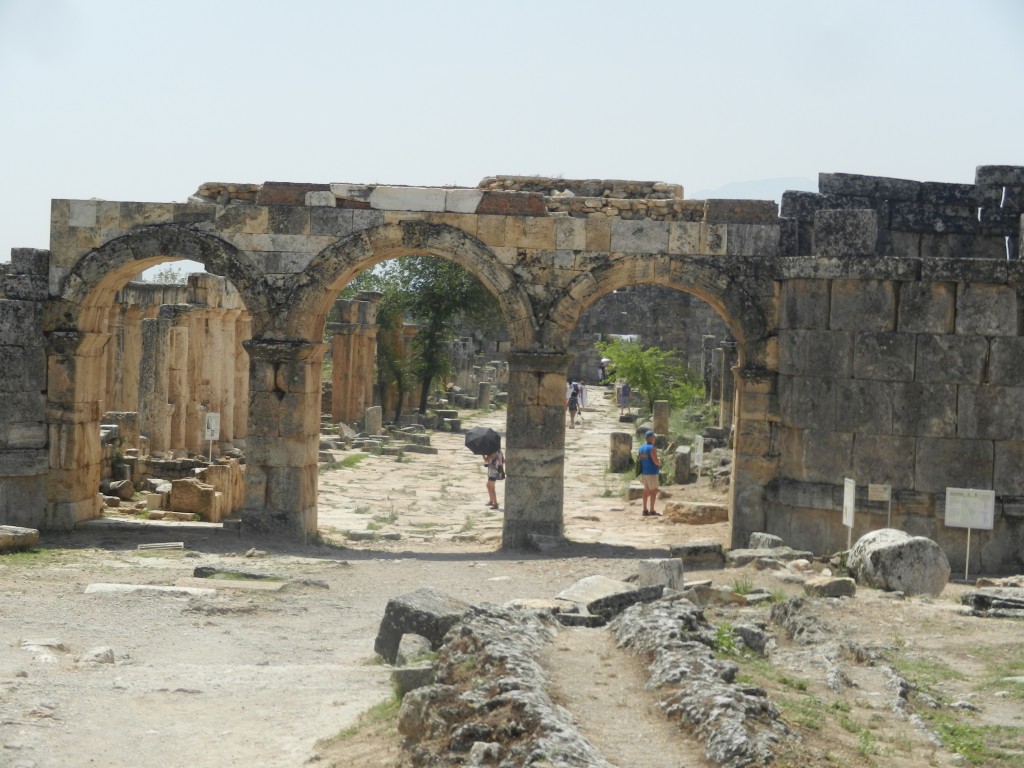
The Romans built these ancient latrines on the grounds.
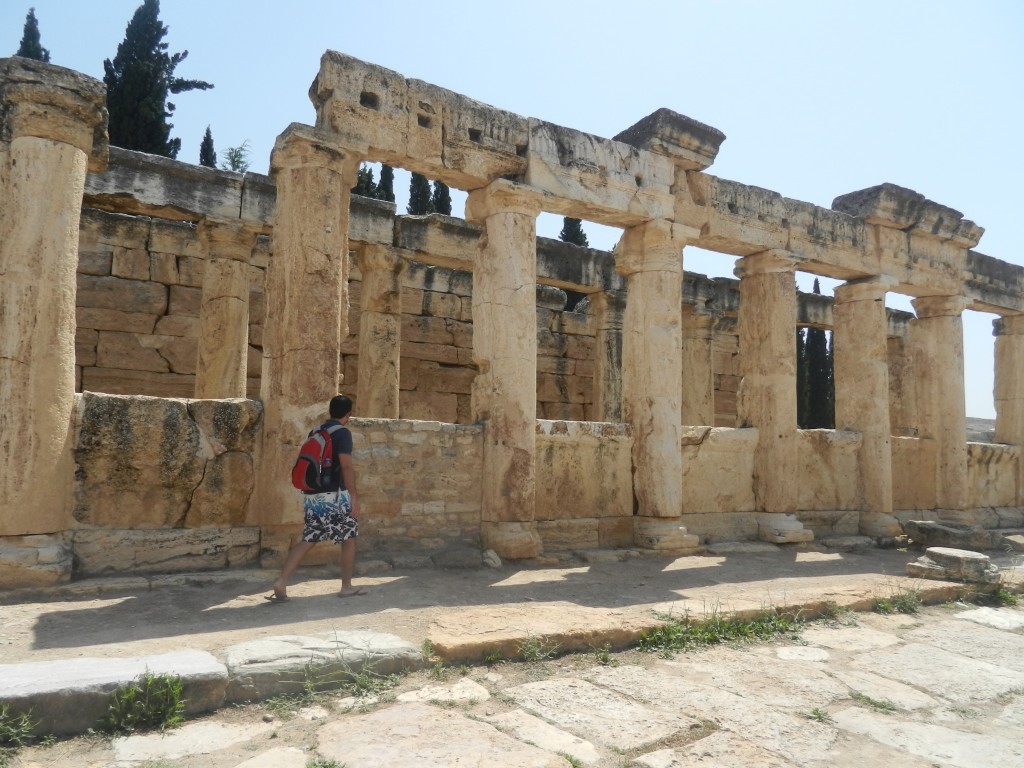
The Temple of Apollo was constructed here, since he was the main god of the town during the Hellinistic period. It sits behind the Nymphaeum, which was built as a shrine to nymphs in the 2nd century AD. The Nymphaeum fountain also distributed water to the homes of the city utilizing its network of pipes.
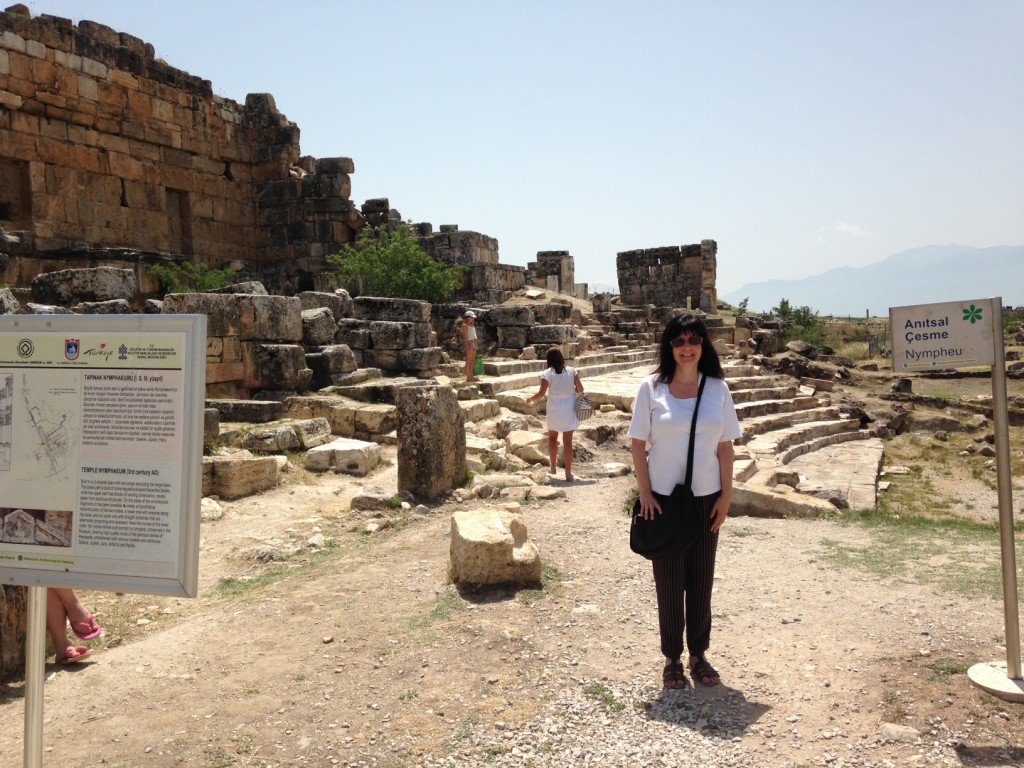
The Apostle Philip was crucified here on the top of these hills.
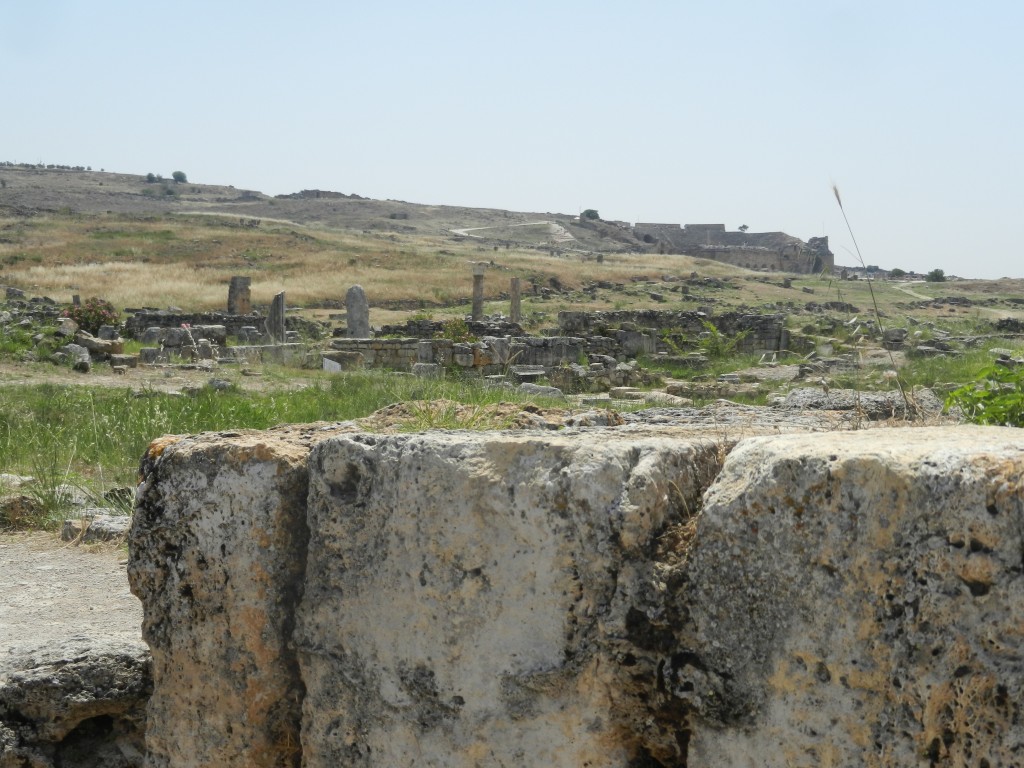
A large Roman theater was erected under the Roman leader Augustus.
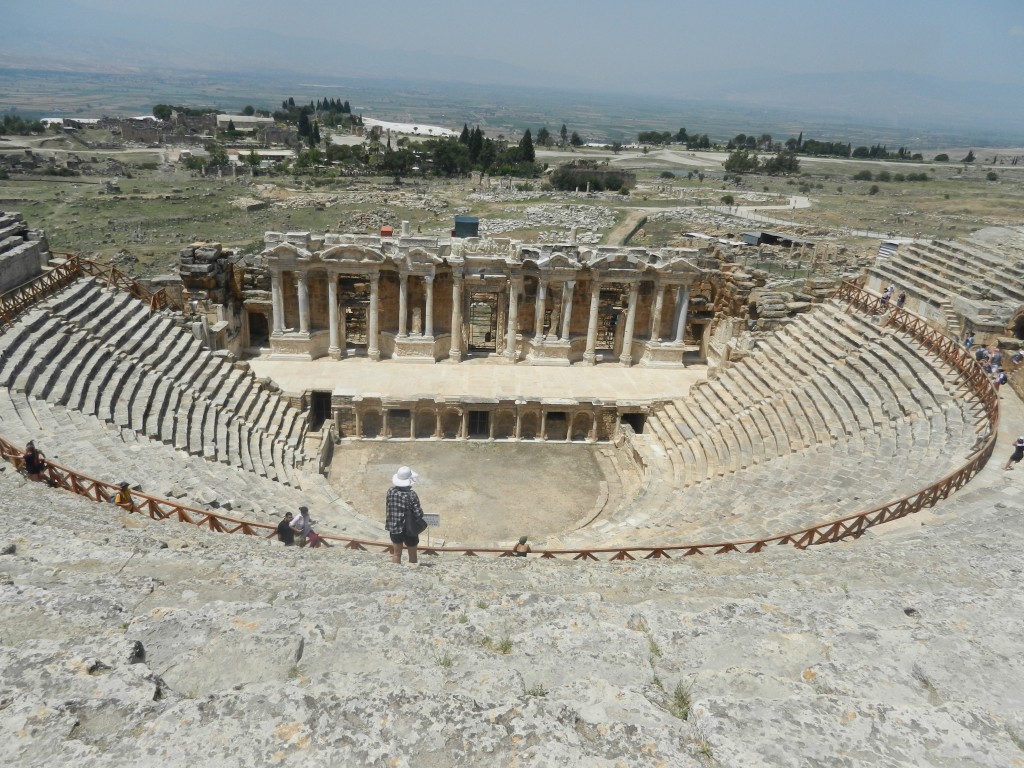
Relief sculptures of mythological figures adorned the stories of the stage area. During the 3rd century, the limestone seats were replaced with marble. The auditorium had a capacity of 15,00 seats. During its course, the orchestra was used for performing live plays, aquatic competitions, and chariot races.
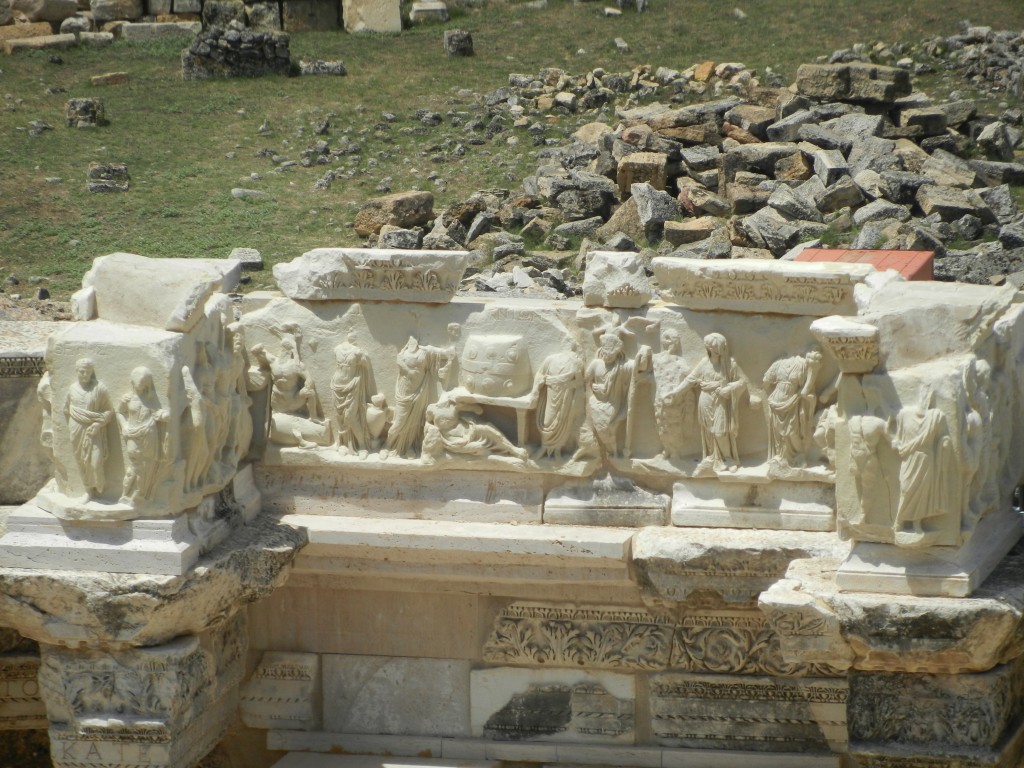
A museum on the grounds of Hieropoulos houses many items that had been excavated from the ancient city. Statues of ancient Greek and Roman political leaders and gods, Byzantine coins, and Greek and Roman Empire pottery are among the treasures.
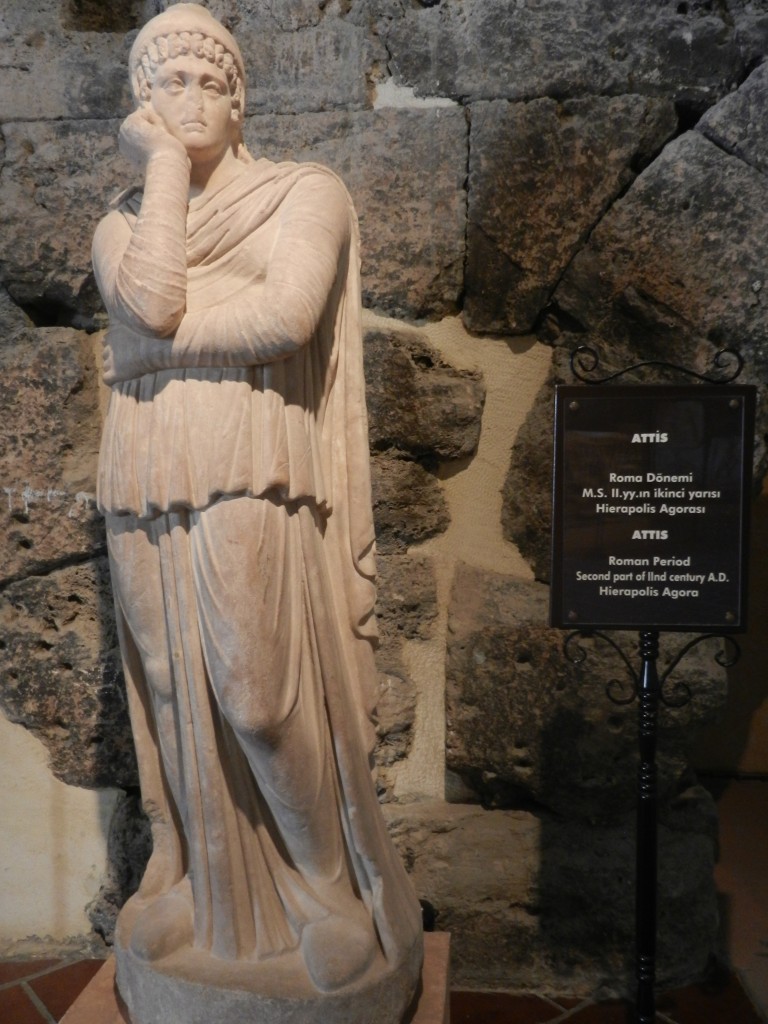
Adjacent to Hieropoulos are the calcium carbonate pools of Pamukkale:”The Cotton Castles”. The natural site in the Denizli province of southwestern Turkey contains hot springs and travertine terraces. The flowing waters left carbonate minerals in the terraces. Many terraces can be found here, each providing a warm and therapeutic environment for visiting tourists.

The views of the calcium travertine terraces are absolutely breath-taking! Numerous shapes and sizes of these calcium travertines with aqua blue waters, make such stunning landscapes! Tourists can walk through each of the thermal pools or step on the calcium rock surfaces. Many a visit grabbed a handful of clay from the bottom of the warm pools and rubbed it into their arms, legs, and faces for therapeutic and cleansing benefits.
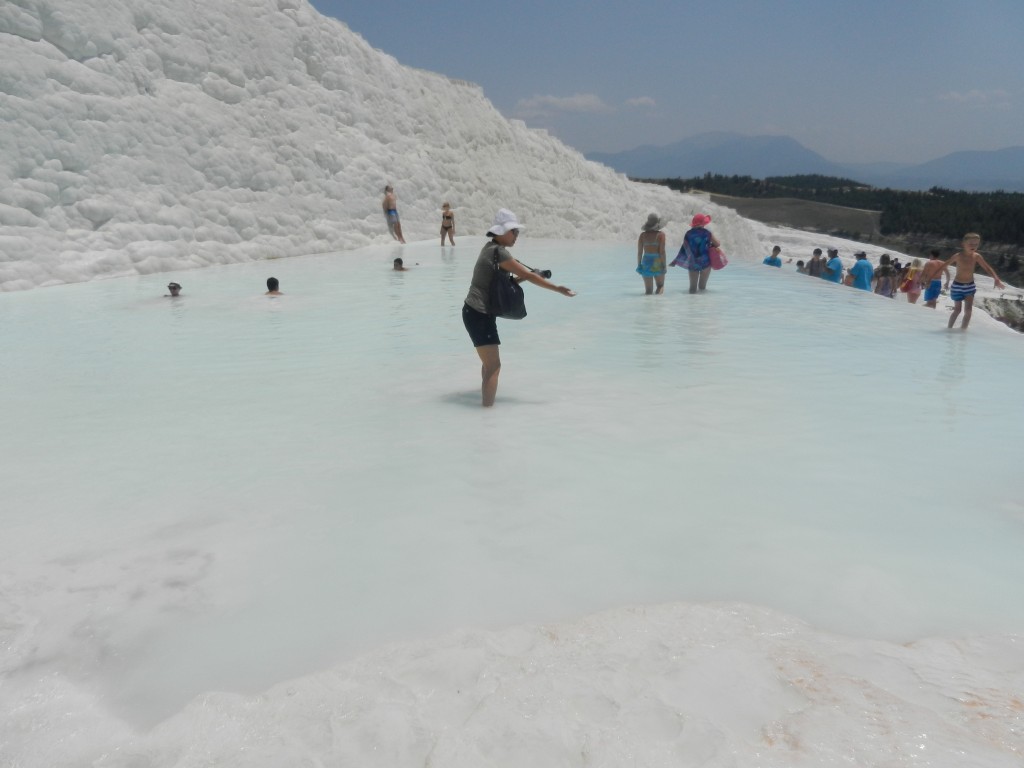
After our time at Pamukkale had completed, we were given a surprise visit to a marble factory. A craftsman demonstrated how the marble is cut and polished by machine, then brought us to the showroom where sleek and polished marble pieces of statues and jewelry were available for purchase.
Our lunch break took place at a local restaurant that our guide had pre-selected. White beans, red and green stewed peppers, and cauliflower in a tomato sauce was my lunch time meal. It was delicious!
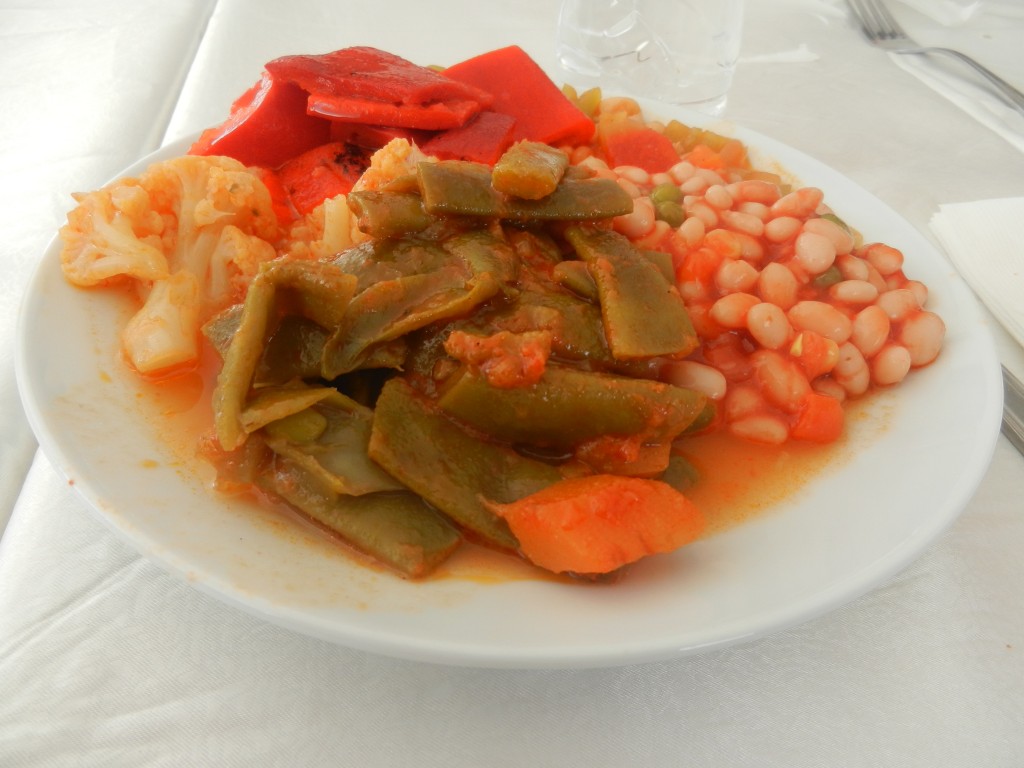
We had completed our tour itinerary for the day and were back en route to our hotel.
Pamukkale is a small city so not many vegan-friendly restaurants exist there. A couple of local dining places are known to have some vegan options. One such a restaurant is the restaurant at the Kale Guesthouse Hotel(Kale Mh. Atatürk Cad. No:16, Pamukkale, Denizli, Denizli, 20280, Turkey, 866 539 8430 ) in the center of town. The owners and their son understand the concept of “Vegan”. That is where I chose to go for dinner. I dined on imam biyaldi(stuffed eggplant), fried zucchini chips, rice, and stewed greens with a side salad and olives. My food was really delicious! Homestyle cooking at its finest can be found here!
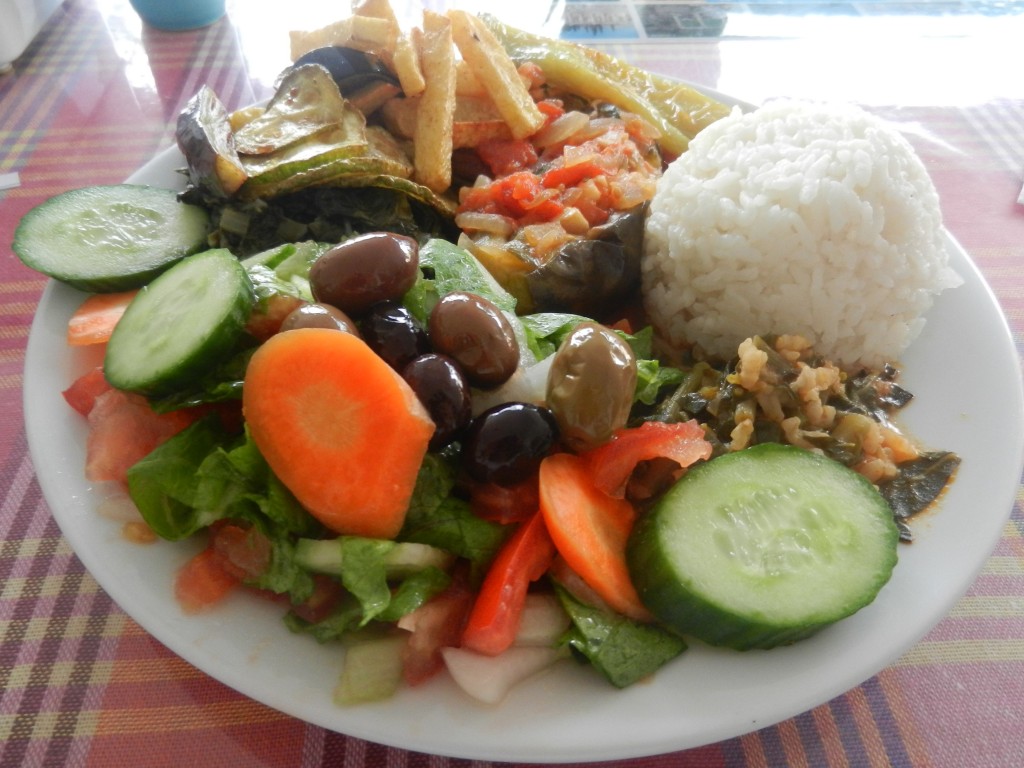
It was time to call it a night and to look forward to the following day’s free time in town, before an afternoon minivan transport to my next destination: Ephesus!
